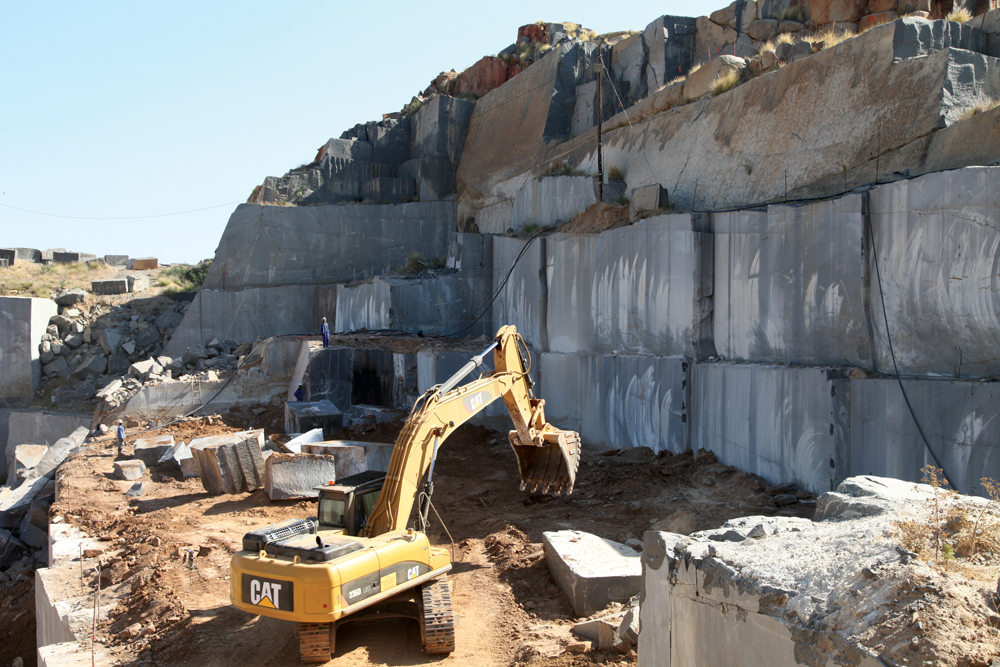Unlocking All-natural Treasures: Granite Quarries in South Africa Unveiled
Unlocking All-natural Treasures: Granite Quarries in South Africa Unveiled
Blog Article
Uncovering the Rich Background and Sustainable Practices of Granite Quarrying
As we stand on the precipice of uncovering the complex tapestry of granite quarrying, a journey with time exposes not simply the physical act of drawing out stone yet also the social and historic value woven into the extremely material of this method. From the old beginnings that laid the structure for modern-day quarrying methods to the lasting methods that are shaping the future of this sector, each sculpt mark on granite surfaces narrates waiting to be uncovered (granite quarries in south africa). The heritage of granite quarrying stretches much past mere extraction; it is a testimony to human ingenuity, strength, and the long-lasting appeal of this majestic rock
Old Beginnings of Granite Quarrying
Going back to old human beings, the technique of quarrying granite has been an integral component of human history and building development. The earliest evidence of granite quarrying go back to old Egypt, where substantial pyramids and intricate sculptures were crafted from this long lasting stone. The Egyptians used primitive tools to remove granite blocks from quarries, showcasing the value of this material in their monumental buildings.
Progressing in history, the Greeks also made significant contributions to the quarrying of granite. The Greeks used granite in different architectural marvels, such as temples and sculptures, showing their ability in shaping and sculpting this sturdy rock. The Romans better improved the techniques of quarrying granite, using advanced devices like blades and hammers to remove and shape granite for their iconic structures.
With the centuries, the practice of quarrying granite has evolved, with modern-day technologies enhancing performance while maintaining the ageless charm of this all-natural rock - granite quarries in south africa. From ancient human beings to modern builders, the heritage of granite quarrying continues to form our globe
Advancement of Quarrying Methods
The advancement of quarrying techniques has been noted by a continuous development in the direction of greater performance and accuracy in extracting granite. Early quarrying techniques included manual labor with basic tools such as knives, hammers, and wedges to remove granite blocks from the earth.
In more recent times, the development of machinery reinvented the quarrying industry, making it possible for quicker removal prices and enhanced productivity. Technologies such as diamond cable saws, high-pressure water jets, and pneumatic drills have actually become conventional in modern quarries, enabling exact cutting and minimized waste. Moreover, innovations in computer-controlled tools and 3D modeling have actually maximized quarrying operations, bring about marginal environmental impact and enhanced sustainability methods. As the need for granite continues to rise, the development of quarrying strategies continues to be integral to conference market needs efficiently and sustainably.
Cultural Relevance of Granite
Granite holds an extensive social relevance throughout different worlds due to its enduring visibility in building work of arts and admired monoliths. From the marvelous pyramids of Egypt to the detailed carvings of the Angkor Wat temple in Cambodia, granite has actually been a material of choice for expressing majesty and durability in cultural heritage. In old Rome, granite columns decorated temples and public structures, symbolizing strength and durability. The cultural relevance of granite prolongs beyond its physical attributes; it personifies durability, stability, and timelessness, making it a symbol of sustaining traditions and practices.

Sustainable Practices in Quarrying
In the middle of the rich history of granite quarrying and its social relevance lies a growing focus on lasting techniques within the market. As environmental awareness and concerns concerning resource deficiency have heightened worldwide, the quarrying sector has actually increasingly welcomed sustainable approaches to reduce its impact on the setting and surrounding areas.

In addition, recovery and recovery of quarry websites post-extraction are important to lasting methods. By bring back quarried areas to a natural or valuable state, such as developing wild animals habitats or recreational spaces, quarriers can offset the environmental impact of their procedures and add positively to the regional ecological community.
Legacy of Granite Quarrying
With a historic background soaked in craftsmanship and industrial progress, what sustaining effect has granite quarrying left on the landscape of modern-day society? The legacy of granite quarrying goes beyond simple extraction practices; it has actually formed building wonders, metropolitan landscapes, and cultural heritage worldwide. The sturdy nature of granite has actually made it a preferred selection for monuments, structures, and facilities, standing click this site as a testament to the ability and creativity of quarry workers throughout generations.
Moreover, the financial footprint of granite quarrying can not be overlooked. The sector remains to provide work possibilities and drive neighborhood economic situations in regions where granite removal is common. It click here to read has actually likewise spurred technical improvements in quarrying techniques and tools, resulting in more effective and lasting practices.
In terms of sustainability, the tradition of granite quarrying consists of initiatives to reduce environmental effects via reclamation jobs and liable source management. By balancing financial interests with environmental stewardship, the market makes every effort to ensure that future generations can remain to gain from this enduring natural deposit.
Final Thought

Report this page